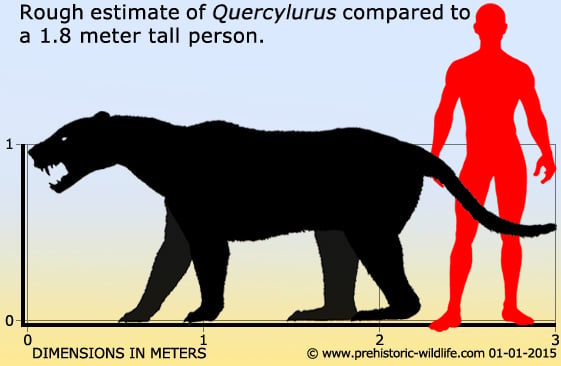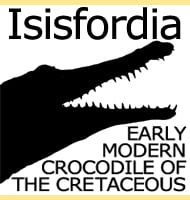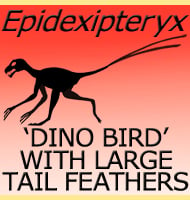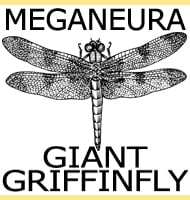In Depth
Most nimravids were relatively small cat-like mammals that ranged between one and two metres in length, but Quercylurus was a giant when compared to these, something which leads to the popular comparison of Quercylurus being the size of a brown bear. This size would make Quercylurus comparable to some of the larger creodont predators such as Sarkastodon from Asia and denotes a specialisation towards hunting powerful prey animals. Scavenging may have also been an option where Quercylurus could have used its larger size to drive away smaller predators from their kills.
There is some uncertainty about the future validity of Quercylurus, particularly with regards to another nimravid called Dinailurictis. There has been some suggestion that Dinailurictis should actually be treated as a synonym to Quercylurus, as well as other suggestions that both are actually species to the Nimravidae type genus Nimravus. However the largest confirmed specimens of Nimravus are only around one hundred and twenty centimetres long, less than half the length of Quercylurus. For this reason most researchers continue to treat Quercylurus as a distinct genus from Nimravus, though the line between it and Dinailurictis is a little more blurry. Dinailurictis lived at a later time than Quercylurus and while this could indicate a longer temporal span for Quercylurus, an alternative interpretation would be Quercylurus being the ancestor to Dinailurictis.
Quercylurus acquired its name from the Quercy phosphorites of France, deposits that contain many mammals including another nimravid called Eofelis.
Further Reading
– Mammoths, Sabertooths, and Hominids 65 million years of Mammalian Evolution in Europe. – Columbia University Press, pp.81-83. – Jordi Agusti & Mauricio Anton – 2002.










